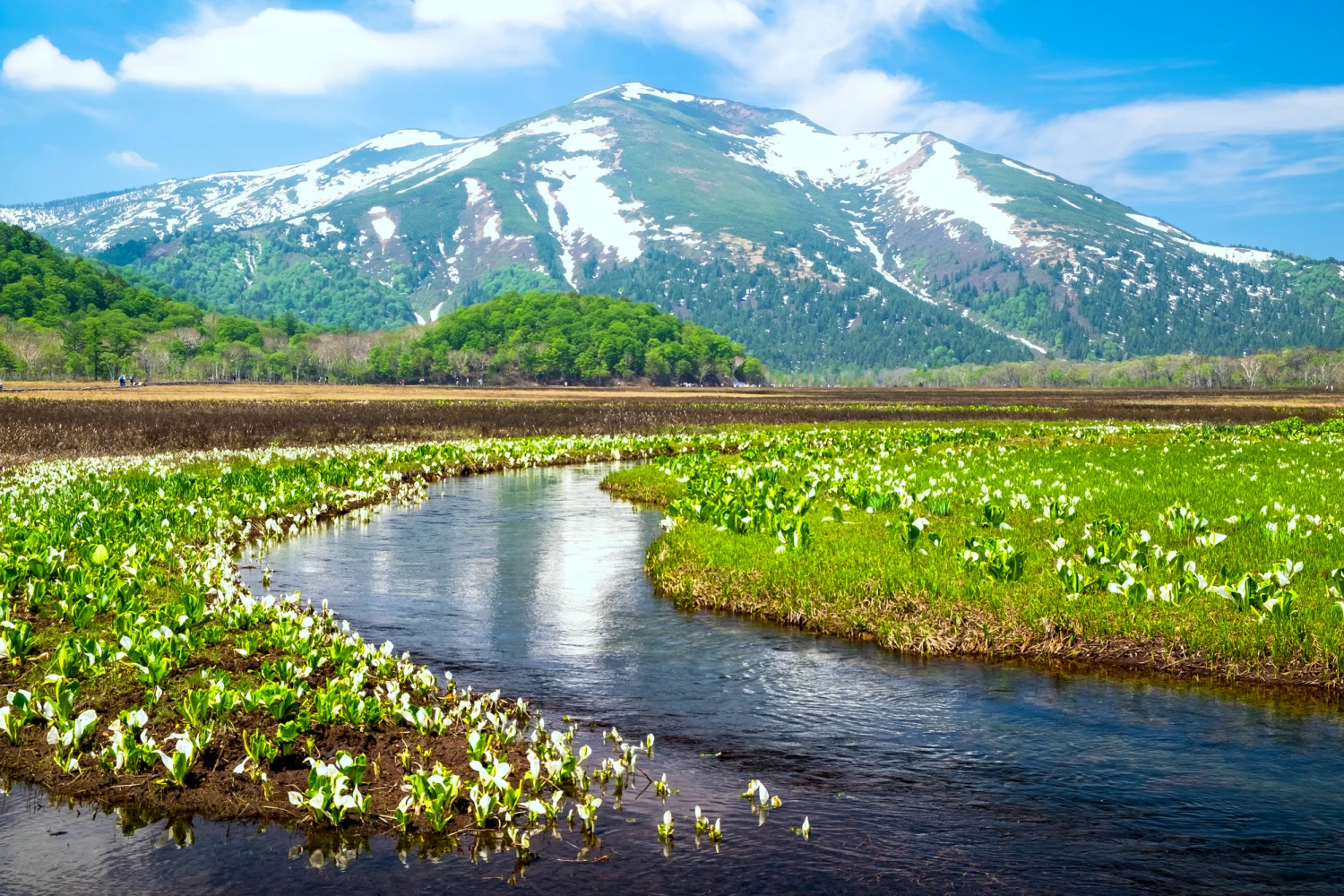
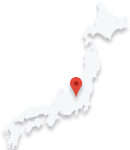
The best Onsen in Gunma 2024
Gunma Prefecture is located in the northwestern part of the Kanto region of Japan's Honshu island, bordering Niigata Prefecture to the north, Saitama Prefecture to the south, Nagano Prefecture to the west, and Tochigi Prefecture to the east, and is a prefecture without a coast.
The southern part of the prefecture has plains and basins, and summer temperatures are among the highest in Japan, but winters are cooler and snowier. The northern part of the prefecture is mountainous and rich in nature, and is home to the headwaters of the Tone River, which is known as Kanto's "water bottle.
Summer is relatively comfortable in the north, and winters are heavy with snowfall, and there are many ski resorts and other winter sports facilities. There are also many Onsen resorts in the north, making it a popular area.
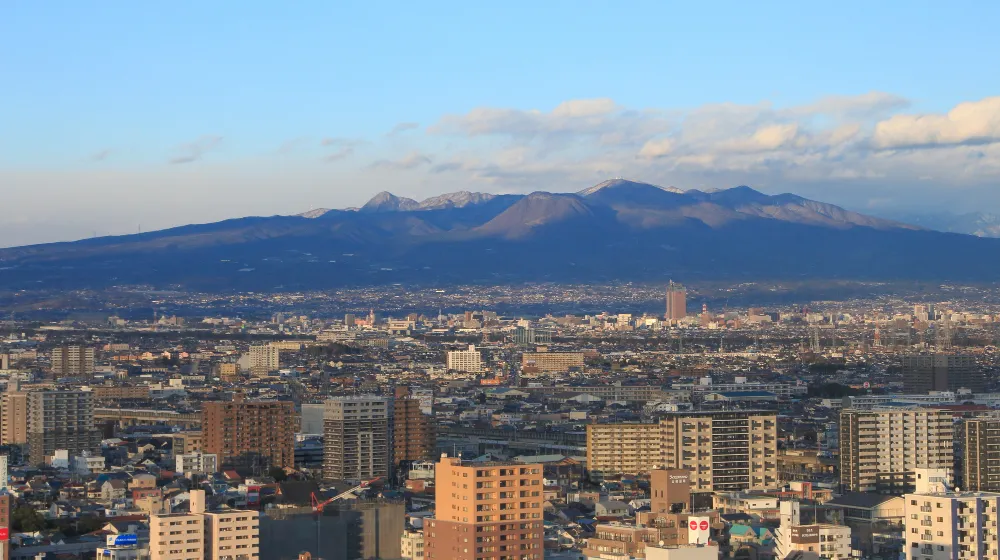
In Gunma Prefecture, many ruins from the Paleolithic and Jomon periods, as well as from the Kofun period, have been found, suggesting that people have been gathering and living in this area since ancient times.
Sericulture and the textile industry also flourished, and Japan's first full-scale mechanical silk mill, Tomioka Silk Mill, is located in Annaka City, Gunma Prefecture. This site was registered as a UNESCO World Heritage Site in 2014 as "Tomioka Silk Mill and Silk Industrial Heritage Group.
The buildings of the machine spinning mill, built in 1872, are open for tours.Adjacent to this Annaka City, Takasaki City and its neighbor Maebashi City form a large population zone, the largest in the northern Kanto region.
In 2021, the prefecture was ranked No. 1 in the list of prefectures with the most attractive Onsens.
As a prefecture in the Kanto region and easily accessible from the Tokyo metropolitan area, it is attracting attention as a place where visitors can experience a rich variety of content in a day trip or a short trip.
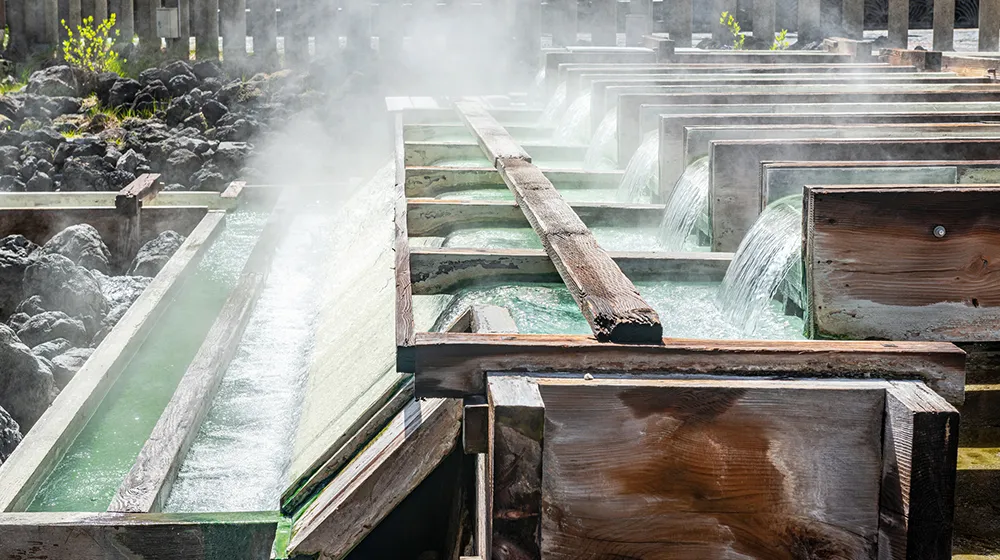
Get to know Gunma
Access
Gunma Prefecture belongs to the Kanto region, and is relatively close to Tokyo, with the prefectural capital Maebashi City only 114 km away, making it an easily accessible area with many means of transportation available.
In particular, the Joetsu and Hokuriku Shinkansen lines can take you to Minakami Town on the border of Gunma Prefecture in about an hour, so many people casually visit the area on weekends.
From Tokyo
<Shinkansen>
Tokyo Station (JR Joetsu Shinkansen) → Takasaki Station (about 51 minutes)
<Train>
Tokyo Station (JR Takasaki Line) → Takasaki Station (about 1 hour 54 min.)
<Bus>
Tokyo Station Yaesu Bus Terminal (Highway Bus Tokyo-Maebashi Line) → Takasaki Station (about 2 hours and 50 minutes)
<Car>
Tokyo Station → Takasaki Station (about 1 hour and 53 minutes)
From Haneda Airport
<Bus>
Haneda Airport (JAL) → (Express Bus Haneda Airport-Maebashi Route) → Takasaki Station (about 3 hours)
From Sendai
<Shinkansen>
Sendai Station (JR Tohoku Shinkansen) → Omiya Station (JR Joetsu Shinkansen) → Takasaki Station (about 51 minutes)
< Car>
Sendai Station → Takasaki Station (about 4 hours)
From Niigata
<Shinkansen>
Niigata Station (JR Joetsu Shinkansen) → Takasaki Station (about 1 hour and 13 minutes)
From Osaka
<Shinkansen / Train / Bus>
Shin-Osaka Station (JR Tokaido Shinkansen Nozomi) → Tokyo Station (JR Joetsu Shinkansen) → Takasaki Station (about 3 hours 25 minutes)
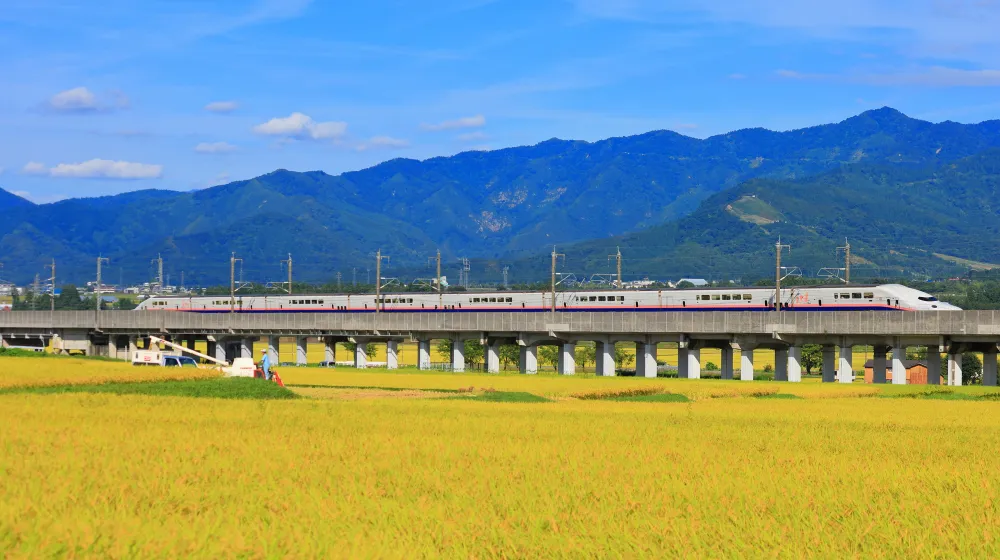
History
Gunma Prefecture is located in the North Kanto region, the northwestern part of Japan's Honshu Island. It is bordered by Niigata Prefecture to the north, Saitama Prefecture to the south, Nagano Prefecture to the west, and Tochigi Prefecture to the east.
The prefecture is home to the headwaters of the Tone River, the first drop of the Tone River, which supports the lives of people in the Tokyo metropolitan area as a source of water and electricity by using hydraulic power generation. The northwestern part of the prefecture is home to lush forests and mountains, and there are many national parks. As a result, there are many high-quality Onsen resorts throughout the prefecture.
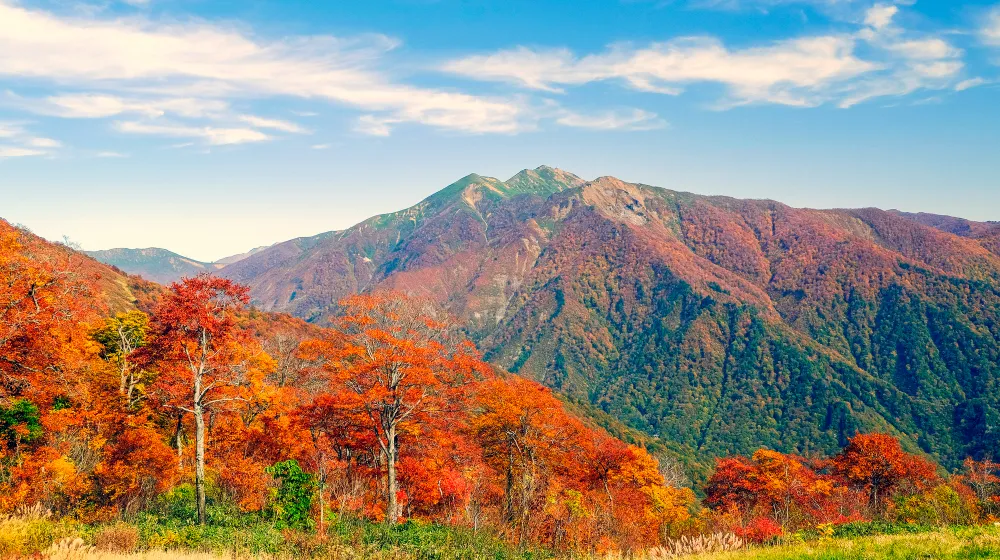
Traces of people gathering in this rich natural setting have been found since quite ancient times, even as far back as the Paleolithic period. It seems that people were attracted by the abundant water and abundant natural resources.
Currently, more than 150 archaeological sites have been discovered in the prefecture, many of which connect the ages of the Paleolithic Age, Jomon Period, Yayoi Period, and Kofun Period. There are many facilities in the prefecture where visitors can see earthenware, haniwa (clay figurines), and other artifacts. Although it is not known for sure, it is speculated that the Onsens found throughout the prefecture were used as medicinal baths from the Jomon and Yayoi periods due to the quality of their water.
In the Kofun period, the area was called Kamitsuke-no-kuni, and is estimated to have been a major center in the eastern part of the country.
In the Nara period (710-794), the name "Gunma" came to mean "herd of horses," and was adopted as the name of the prefecture from the Meiji period (1868-1912) onward.
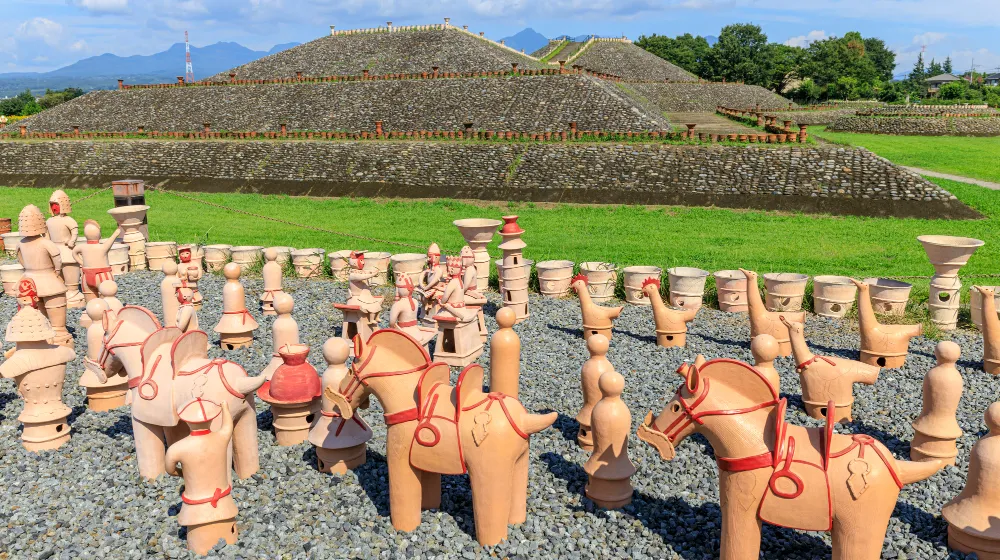
After the Kamakura period (1185-1333), the area became known as Kozuke-no-Kuni and was ruled by a large number of warriors. In the Warring States Period, the Takeda, Uesugi, and Hojo clans all fought for power in the area to expand their territories.
Later, in the Edo period (1603-1867), during the reign of the Tokugawa family, many highways were built in the area, and many merchants, warriors, and court nobles began to use these highways to come and go.
As an important transit point to Edo, many goods and commodities were also brought into the area. These goods were transported to Edo via the Tone River, and at the same time, commerce in the area developed.
As people began to come and go, inns were established in Onsen resorts throughout the prefecture, which developed into Onsen resorts. There are several Onsen bathhouses in the prefecture that were established between the Edo and Meiji periods and are still in operation today.
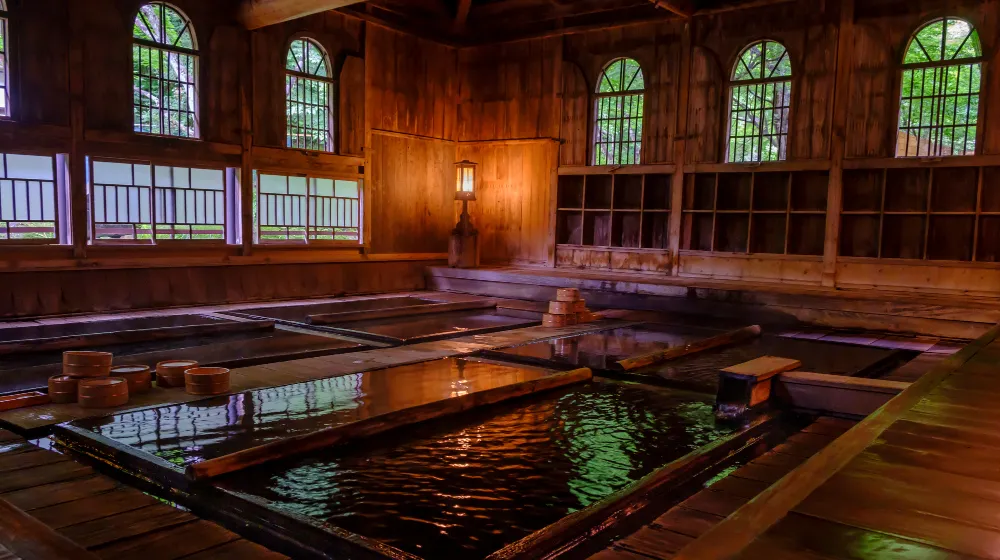
Sericulture and textile industries also developed and became major industries during this period. Even today, Kiryu and Isesaki are known as areas where the textile industry is thriving. As a result, they are said to be areas where women have worked hard and been self-supporting since ancient times.
In the Meiji era (1868-1912), Japan's first full-scale mechanical silk mill, Tomioka Silk Mill, was established in Annaka City, and the sericultural and textile industries expanded further. The production of raw silk, which at that time accounted for 70% of Japan's exports, was the largest in the country.
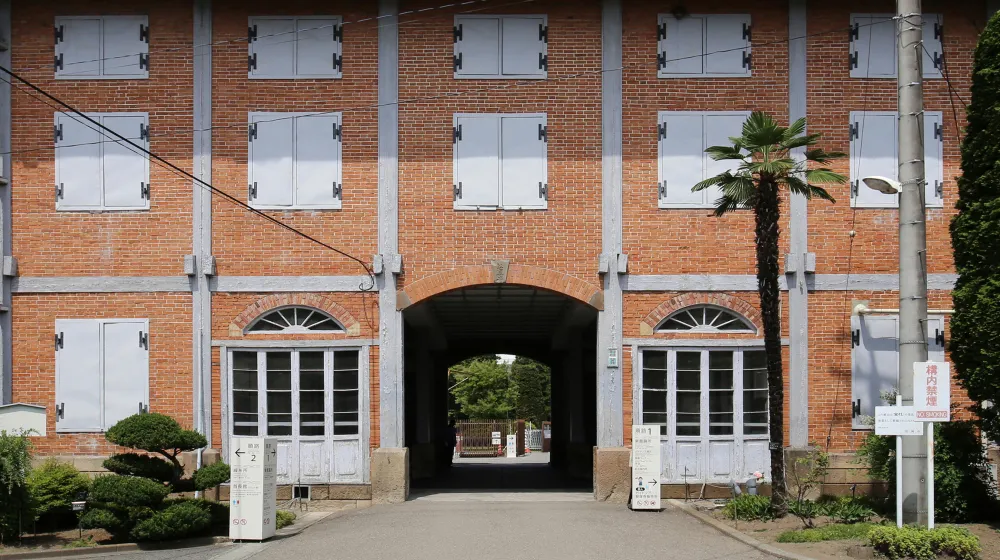
In the Showa era (1926-1989), during the period of rapid economic growth, many dams and power plants were built to take advantage of the abundant water resources. The electricity is supplied to Tokyo and other metropolitan areas.
In addition, many agricultural products are grown and supplied to the metropolitan area due to its proximity to the metropolitan area.
The city's population area, which is connected to Takasaki and Maebashi, is the largest in the northern Kanto region, and has produced a large number of industries. Culturally, Gunma is also famous as the birthplace of the first citizen's orchestra after the war.
The Gunma Music Center, which is now the home of the Gunma Symphony Orchestra, was built by Antonin Raymond and was selected as one of the "20 Best Modern Architectures in Japan," making it a popular destination for fans of modern architecture.
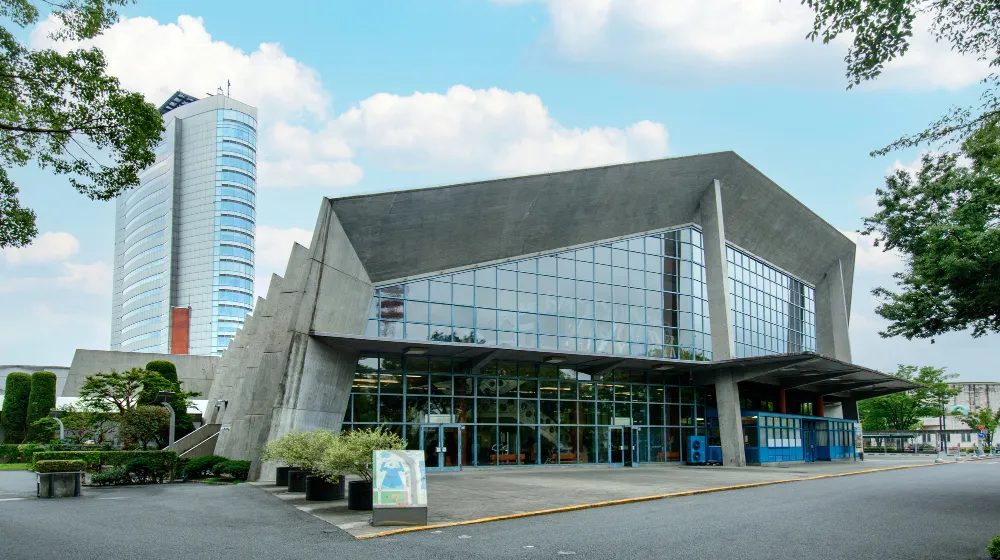
Onsen areas
Kusatsu Onsen
Kusatsu Onsen is so famous in Japan that most people think of Kusatsu when they think of Gunma Prefecture's representative Onsens. Kusatsu Onsen is so famous in Japan that most people think of Kusatsu Onsen when they think of the representative Onsen of Gunma Prefecture. There are six main sources of Onsen, and the amount of natural Onsen gushing out is the highest in Japan, at more than 32,300 liters per minute.
The Yubatake Onsen field, located in the center of the Onsen resort, is the symbol of this spa town, where visitors can actually and visually feel the volume of Onsen water that flows out of the field.
Not only the quantity, but also the quality of the Onsen exceptional, boasting one of the highest acidity levels in Japan. The area is filled with the scent of sulfur, which can be felt especially at Yubatake.
It is said that "there is no disease that cannot be cured except the disease of love," and has healed many people since ancient times. In the Warring States period, it was known as a medicinal Onsen that healed people wounded in battle, and the names of warlords associated with the area, such as Takeda and Sanada, as well as Toyotomi Hideyoshi and Tokugawa Ieyasu, have been recorded.

The 100% natural Onsen, which gushes out naturally, is very abundant, and the temperature is high, ranging from 50°C to 95°C. The famous "hot water fir" is used to lower the temperature, which can be observed and experienced as part of the sightseeing tour.
Yumomi" is the action of putting a wooden board (yumomi-board) into the hot water and stirring it to lower the temperature. The sight of people singing Kusatsu-bushi while "yumomi" is a reminder that many people have visited this area and spun its history together with the people of Kusatsu Onsen.
Geographically located at the eastern foot of Mt. Kusatsu-Shirane at an altitude of 1,200 m, it snows and gets quite cold in winter. Even in summer, temperatures rarely rise above 30°C, making it a comfortable place to spend time. In summer, the refreshing climate makes it possible to tour the Onsens in comfort. In winter, it is recommended to stay warm.
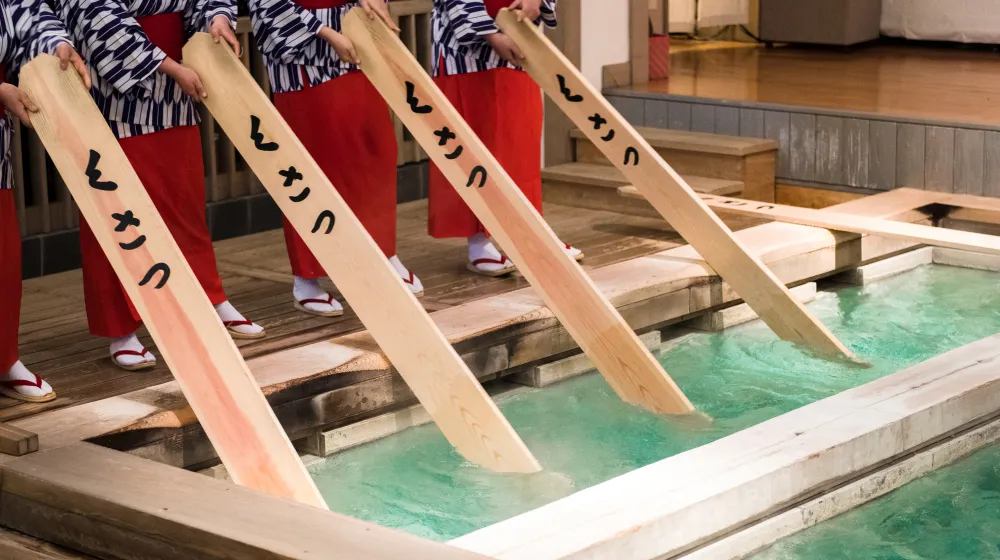
Ikaho Onsen
Along with Kusatsu Onsen, Ikaho Onsen is widely known as one of Gunma's representative Onsen resorts.
It is located near the Maebashi Takasaki area, the largest population zone in the northern Kanto region, and is easily accessible by public transportation or car, which takes about one hour.
The Onsen resort is located 700 meters above sea level at the eastern foot of Mount Haruna, the symbol of the region, and is recognized as the site of the oldest Onsen city plan in Japan.
Although Ikaho Onsen is so old that it has been used as a therapeutic Onsen resort for approximately 1,400 to 1,500 years, it was around 400 years ago, during the Edo period (1603-1868), that a Onsen city project was planned using the slopes.
The Ikaho Shrine stands guard over the area at the top of the 365-step staircase that has become the symbol of this town. The Onsen is located behind the shrine, and the Onsen water is distributed to the inns built on both sides of the stairs by using the slope to flow downstairs.

There are two types of Onsens, known as "Golden Onsen" and "Platinum Onsen" in Ikaho Onsen.
“Golden Onsen " is a calcium-sodium-sulfate, bicarbonate, and chloride Onsen (neutral hypotonic Onsen), which is originally clear and colorless, but turns brownish brown when exposed to air due to the presence of iron.
“Platinum Onsen " is a simple Onsen, originally only " Golden Onsen," but in 1996, a new " Platinum Onsen " was discovered. The " Platinum Onsen " is also popular among everyone from babies to the elderly as it contains only a trace amount of ingredients, but boasts an abundant amount of Onsen water.
Minakami Onsen (Minakami 18 Onsens)
Located in the northernmost part of Gunma Prefecture, Minakami Town borders Niigata Prefecture. It is a town rich in nature where the first drop of the Tone River, the largest first-class river in Japan, originates. The area of the town is the largest in Gunma Prefecture, and most of it is covered with mountains and forests, with elevations ranging from 200m to 2,000m, making it a town with a considerable difference in elevation.
The town is rich in nature and its large area is dotted with a number of Onsens, which were collectively named "Minakami 18 Onsen".
The town is not a Onsen resort, but rather a town rich in nature, with Onsens gushing out from everywhere and many Onsen resorts to be enjoyed. The town's magnificent nature has even been registered as a UNESCO eco-park.
Although the northern end of the prefecture may seem remote, the Joetsu and Hokuriku Shinkansen bullet trains run from Tokyo Station to Jomo Kogen Station, a Shinkansen stop in Minakami Town, is only about an hour away.
By car, it takes about 2 hours and 15 minutes from Tokyo, so in recent years, the number of people making casual day trips and short trips from the Tokyo metropolitan area has been increasing.
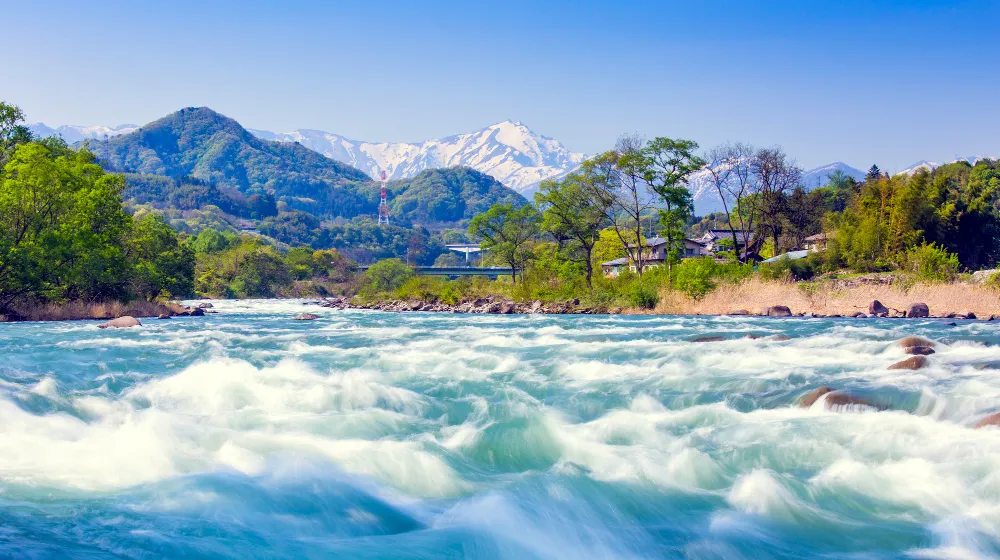
Two of the most popular are Minakami Onsen and Takaragawa Onsen.
Takaragawa Onsen is located near a forest where the headwaters of the Tone River flow, and its huge open-air baths have been used as a movie location. Many people are repeat visitors to the onsen while enjoying the magnificent view of nature.
Minakami Onsen is a charming retro Onsen resort, and both have been used as hidden Onsen cures for a long time because they are deep in the mountains. Other Onsens in the area include "Tsukiya/Kamimoku Onsen," which is said to be a Onsen for beautiful women, "Houshi Onsen," which has a history dating back 1,200 years, and "Mikuni/Sarugakyo Onsen," located along the Mikuni Kaido in the same area.
It is also famous as a place where various activities can be enjoyed throughout the four seasons, and is especially known as a sacred place for water sports activities. It is also recommended to enjoy it in combination with Onsens.
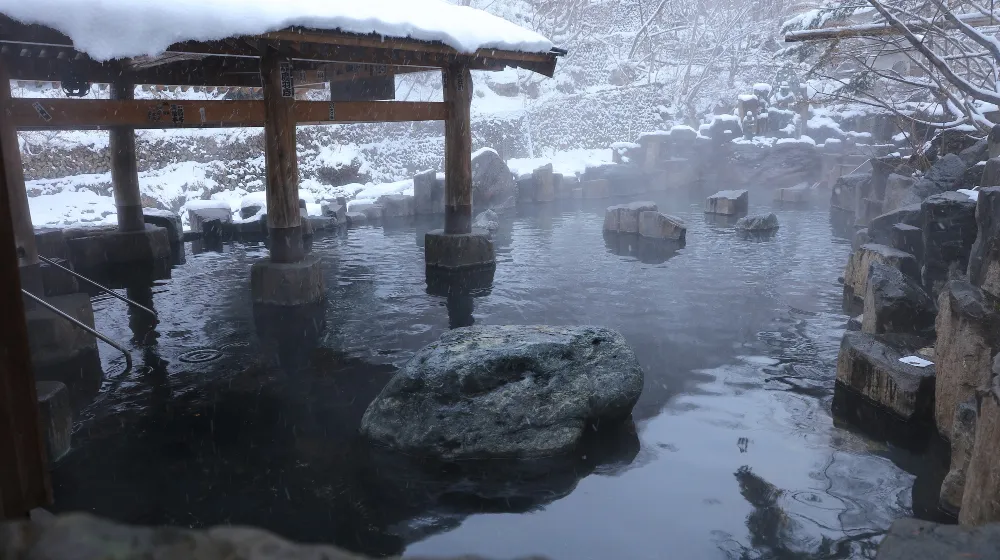
Check Minakami / Takaragawa Onsen Guide
Manza Onsen
This Onsen resort is located in the northwestern part of Gunma Prefecture, bordering Nagano Prefecture at an elevation of approximately 1,800 meters above sea level, at the foot of Kusatsu-Shirane Mountain. It is located about 30 minutes by car from the Kusatsu Onsen town toward Mt. Shirane and deeper into the mountain.
Manza Onsen is also known for its abundant Onsen water, 5.4 million liters per day, and the quality of the water. Like Kusatsu Onsen, it is an acidic sulfur spring that is said to contain one of the highest levels of sulfur in Japan, and has long been said to be effective against all illnesses.
Although it is not known when the onsen was first opened to the public, it is believed to be quite old, and there is a legend that Sakanoue Tamuramaro, a military commander in the Heian period (794-1185), exterminated demons in the area.
During the Edo period (1603-1867), the spring was visited by many people who wanted to be cured of their illnesses because of its efficacy as a therapeutic bath.

There are more than 20 types of Onsens, including ubayu (yubatake), Ookuyu, Suzuyu, Tetsuyu, Kuyu, Radium kitakusen, Houseinoyu, allowing visitors to enjoy a variety of Onsens while touring the baths.
It is said to be effective for respiratory illnesses, gastrointestinal diseases, rheumatism, and skin diseases, and many episodes of curing intractable diseases have been passed down from generation to generation.
Manza Onsen is located at the foot of Mt. Shirane, one of the 100 most famous mountains in Japan, and because of its high elevation, the area has a large snowfall in winter, making skiing and other winter sports enjoyable. In other seasons as well, visitors can enjoy the lingering snow and fresh greenery in spring, a summer getaway in summer, and the changing leaves in autumn throughout the year.
Also, the crater lake Yugama, located at the top of Mt. Shirane, is one of the most acidic lakes in the world, with beautiful white rock surfaces and emerald green lake surface, which is made up of its components.
It is recommended that visitors check before visiting the lake, as it may not be open for tours due to volcanic activity at Mt.Shirane
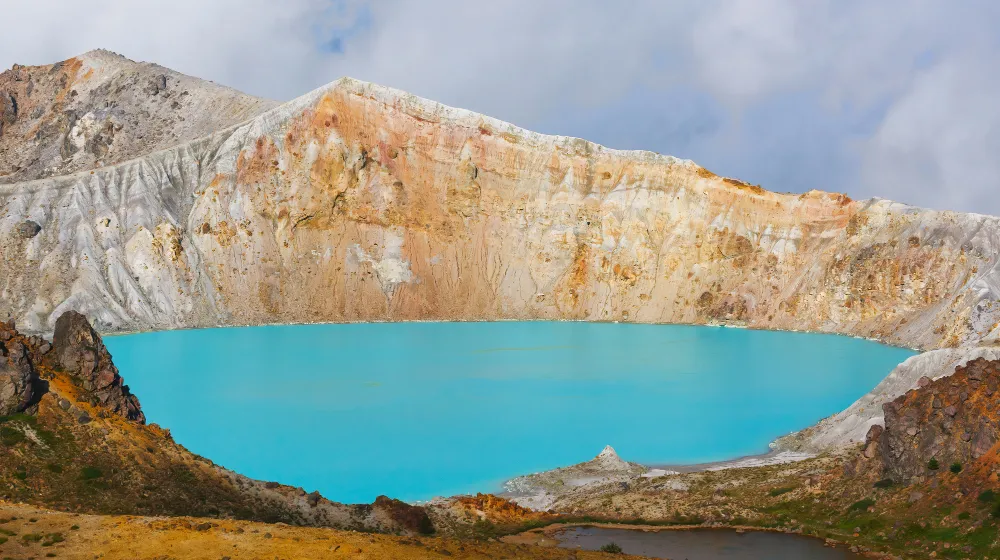
Shima Onsen
This Onsen resort is located in the mountains in the northwestern part of the prefecture, in the Joshinetsu Kogen National Park, like Kusatsu Onsen, Ikaho Onsen, Manza Onsen, and Minakami 18 Onsens.
Lake Shima is famous for its beautiful cobalt blue water. The Shima River basin, which flows into Lake Shima, is divided into five districts, each with a long and narrow line of Onsen bathhouses and facilities.
It is said that many people have been visiting the area since ancient times as a sacred spring that "cures the illnesses of the people of Shiman(forty thousand)".
Like Manza Onsen, this Onsen is said to have been opened in the late Nara period (710-794) or early Heian period (794-1185), and like Manza Onsen, it is said that Sakanoue Tamuramaro healed his fatigue during his expedition to the east.
The first bathhouse was established in 1563 during the Warring States period, and Masayuki Sanada, a feudal warlord, built a therapeutic bathhouse.
After that, Onsen bathhouses opened little by little, and "Sekizenkan," which is currently the oldest Onsen bathhouse, opened in 1691 during the Edo period. The building of this bathhouse is designated as an important cultural property by Gunma Prefecture, and is famous for being the model for the bathhouse that appears in the movie "Spirited Away.
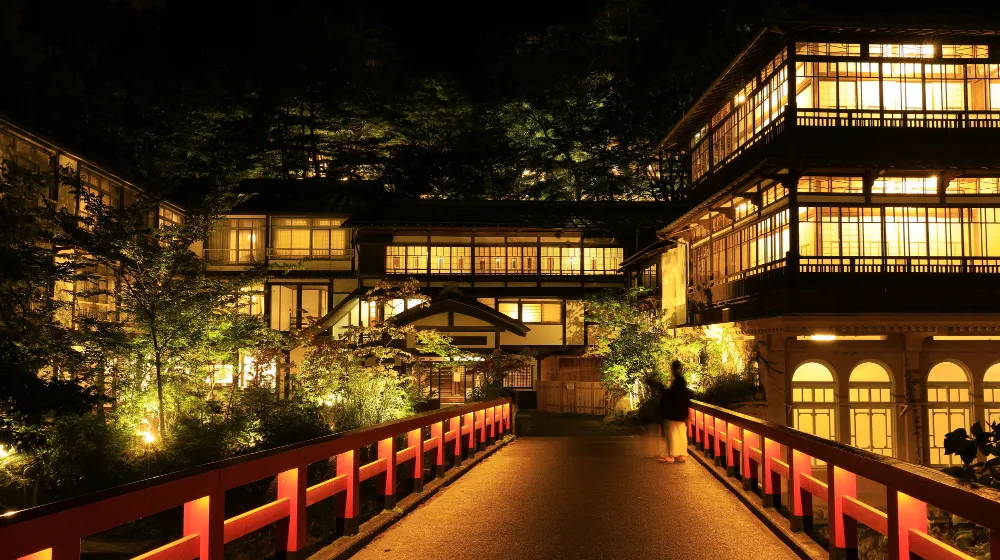
The springs are sodium-calcium chloride-sulfate springs. There are 42 sources in total, most of which 39 are natural springs.
It has long been called "one of the three best Onsens for gastrointestinal diseases in Japan," and is said to be good for the stomach if drunk, and good for the skin if bathed in, and is loved by many. It is also known as "Kusatsu's finishing Onsen," and a standard course of treatment was to take a bath in the highly acidic Kusatsu Onsen followed by a stay in Shima Onsen, which has moisturizing and beautifying effects on the skin.
Surrounded by beautiful nature, visitors can enjoy camping and hiking in combination with the Onsens, or canoeing and sipping in the beautiful cobalt blue waters of Lake Shima.
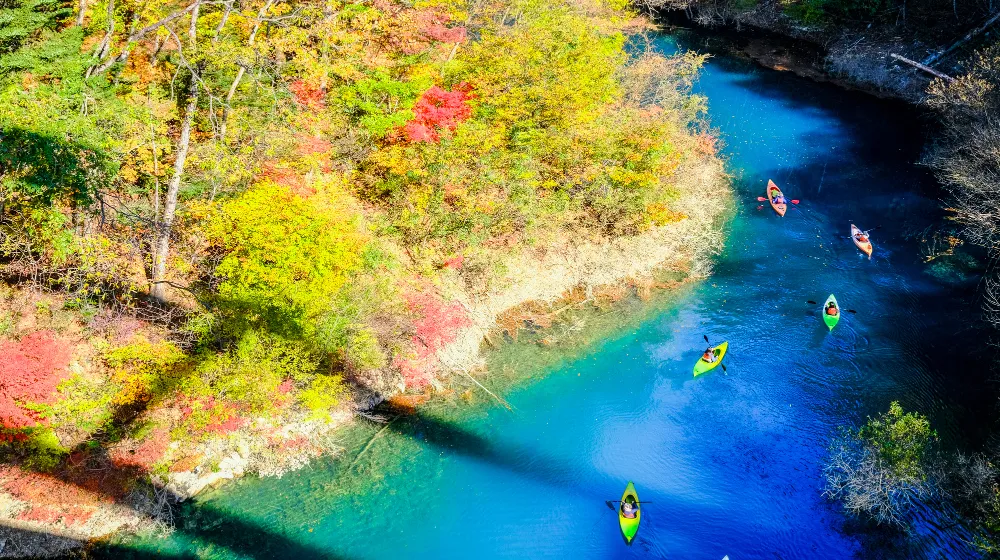
Oigami Onsen
I These hot springs are scattered throughout the Katashinagawa basin in the northeastern part of the prefecture, between Hotaka Mountain and Akagi Mountain, on the way to Oze National Park.
Oigami Onsens have been in use for a long time, and the exact date of their opening is not known. It is said that when the god of Mt. Akagi was wounded in a battle between the god of Mt.Nantai of Nikko and the god of Mt. Akagi, he stuck an arrow in the ground, which caused the water to boil. After the wound was healed, the Akagisan's god chased after the Nantaisan's god, which is said to have changed its name from "chasing god(Oukami)" to "old god(Oigami).
In honor of this legend of the opening of the Onsen, the "Great Snake Festival" dedicated to the god of Mt. Akagi is held every year in May.

The quality of the springs is simple sulfur Onsen, simple Onsen, and alkaline simple Onsen, but each of the 13 bathhouses has its own source, and the ingredients are slightly different. It is recommended to visit several different Onsens.
It is said to be particularly effective for skin diseases, atopic dermatitis, muscle pain, and urticaria.
The rich and beautiful nature of Katashina Valley and Fukiware Falls, which are the most beautiful of all the tributaries of the Tone River, is also an attraction.

Search by Prefecture
Search by Onsen area
- Hokkaido
- Nagano
- Akita
- Kanagawa
- Yamagata
- Shizuoka
- Gifu
- Hyogo
- Wakayama
- Yamanashi
- Kumamoto
- Oita
- Fukushima
- Tochigi
- Gunma
- Ishikawa
- Shimane
- Ehime
- Saga
- Kagoshima
